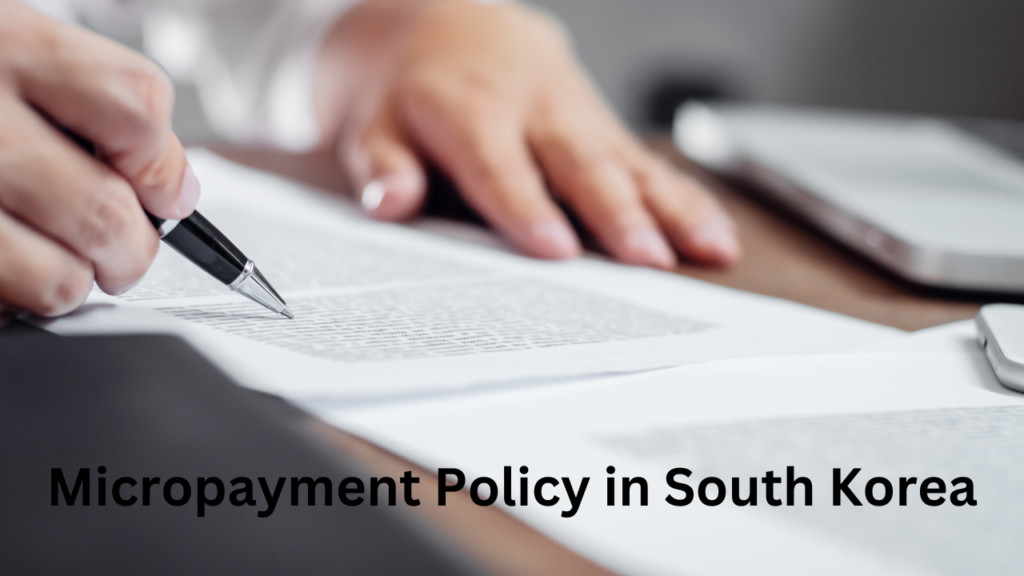Micropayments are tiny cash transfers under a dollar. They are becoming increasingly important now, as digital stuff and online services are increasing. The micropayment model is a good way to make money from cheap goods and services. South Korea has many internet users and tech-savvy people. It is a leader in using and controlling micropayment systems. This article looks at the micropayment policy in South Korea. It shows how it started, its effects, and what may happen next.
The Evolution of Micropayment policy in South Korea
South Korea’s micropayment journey is linked to its fast digital change. The country has solid digital systems, and many smartphone users made micropayment systems possible. In the 2000s, South Korea saw a shift to digital payments. Online gaming, digital music, and e-books needed new payment models.
Companies like Kakao and Naver led the way. They are prominent in South Korea’s tech industry. Kakao made KakaoPay. Users could pay small amounts quickly on their phones, which was a big step toward a cashless society. Micropayments let people buy things that were too costly before due to high fees.
Micropayment Policy in South Korea
Payment Rules in South Korea
South Korea has rules for small money payments. These rules protect people. They also helps companies create new ideas. The Financial Services Commission (FSC) oversees digital payments like small money payments. The critical goals of these rules are:
- Keep people safe: The rules make sure people don’t get tricked or have money taken without permission. Companies must have strong security measures. They must also have straightforward ways to resolve problems.
- Encourage new ideas: The rules let companies develop new ways to pay digitally and new services.
- Fair competition: The rules ensure that no company has too much control They promote healthy competition between payment companies.
Payment Security
Security is very important for digital payments. South Korea’s rules say companies must use strong encryption and multi-factor authentication to protect people. Companies must also get security checks regularly to follow the rules.
Transaction Limits and Consumer Rights
The rules for small payments in South Korea set limits and rights for users. For instance, there are caps on how much cash a person can pay through these small payments in a specific period. This rule helps stop people from spending too much money. Also, users can challenge payments they did not ok and ask for refunds in some cases. These rules make people trust the small payment system more.
How Micropayment Shape South Korea’s Economy
The ability to make tiny payments has significantly impacted South Korea’s economy. It has fueled growth in several vital areas:
Digital Content: This policy has boosted digital content platforms like online games, streaming services, and e-books. Micropayments make it simple for people to buy content item-by-item or through subscriptions.
E-Commerce: Micropayments aid e-commerce growth by letting buyers make small purchases sans big fees drives more online shopping and helps small entrepreneurs and vendors thrive.
Financial Inclusion: The policy gives people without traditional bank access to a straightforward payment method. This positive impact reduces South Korea’s economic divide.
Obstacles and Future Prospects
Despite successes, South Korea’s micropayment policy encounters challenges. Security remains an ever-present concern as cyber threats rapidly evolve. Vigilance and security practice innovations must continually address fraud and unauthorized transaction risks.
Another test balances innovation and regulation. While enabling innovation, excessive regulation can hinder creativity and slow new technology adoption. Striking this delicate balance proves crucial to maintaining a dynamic, competitive digital economy.
Smaller Payments in the Digital Age in South Korea
Looking forward, South Korea will likely keep improving its smaller payment rules. These rules make digital payments easier. Essential trends that will change smaller payments in South Korea include:
Working with New Technologies: Combining smaller payments with new technologies like blockchain and artificial intelligence will create new digital payment ideas.
Growing into New Areas: People expect smaller payments to expand into new areas like healthcare and education, which gives more flexibility and access in these areas.
Working with Other Countries: As smaller digital payments become more standard worldwide, South Korea may work with other countries. They may create international rules for digital transactions.
Conclusion: Micropayment Policy in South Korea
South Korea’s more 소액결제 정책 helped grow its digital economy. The rules encouraged new ideas, protected consumers, and made digital payments accessible, creating an active space for digital transactions that helped different areas grow, like digital content, e-commerce, and small businesses. However, challenges remain, like keeping strong security and balancing rules with new ideas. South Korea’s focus on combining new technologies and working with other countries will shape smaller payments. As the digital landscape changes, South Korea’s Micropayment rules will ensure smooth, secure experiences.

